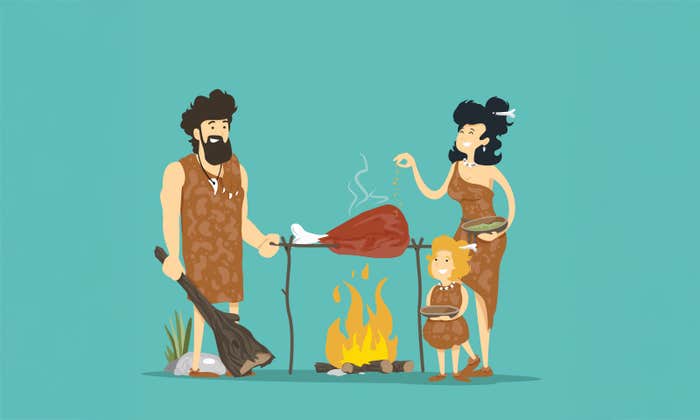Have you ever been at sea in a dense fog, when it seemed as if a tangible white darkness shut you in, and the great ship, tense and anxious, groped her way toward the shore with plummet and sounding-line, and you waited with beating heart for something to happen?
If there’s a better description of what it feels like to wait for the mass spectrometer to spit out the first data point of a brand new experiment, I can’t imagine what it would be. However, that passage wasn’t written by a chemist, or a physicist, or a biologist … it was written by a 20-something woman who could neither see nor hear.
I have always been taken by the books of Helen Keller, for, in essence, they are textbooks meant to teach us how to observe life. Her best-known work, The Story of My Life, was published in 1903. Within it, she recollected her early years, spinning the dispersed wool of her babyhood into the tangled threads of her childhood. These would eventually be woven into the whole cloth of adulthood with the help of Anne Sullivan, and eventually immortalized in the popular three-act play, The Miracle Worker.
Born in Tuscumbia, Alabama, in 1880, Helen Keller thrived as a healthy infant for 19 months, until she fell ill with what was probably meningitis. She survived the raging fever but permanently lost both her sight and her hearing.
Keller describes the outcome of her illness as having “plunged me into the unconsciousness of a new-born baby,” and then recounts how this new state became normal: “I got used to the silence and darkness that surrounded me and forgot that it had ever been different.” The next two chapters describe the five-and-a-half years that Keller struggled to understand the world she was living in and communicate with those around her, without the benefit of a common language.
Each time I read Helen Keller’s work, I am reminded that I should use all of my senses as I study the world.
Most people are familiar with the moment when Anne Sullivan helped the 7-year-old Keller make a tactile connection between the concept of running water and the motion of hands spelling out its English name, “W-A-T-E-R.” Keller herself described that moment as “my soul’s sudden awakening.” But Keller’s writing makes it clear that her soul—as well as intellect—was actually wide awake well before that particular epiphany.
In the short two-and-a-half chapters of her autobiography that relates the years between infancy and before the arrival of Sullivan, Keller does an extraordinary job of describing how an experimental scientist’s subconscious mind works. She describes her first efforts at awareness in terms of “fleeting memories, if, indeed, they be memories, it all seems very unreal.” The richly detailed involuntary memory that follows would have made her contemporary Marcel Proust jealous (though it’s doubtful he ever read it). Perhaps the reason that these earliest impressions resonate so much with me, however, is that they mostly revolve around the plants in the “old-fashioned garden [that] was the paradise of my childhood.”
Throughout these early chapters, Keller gushes over the violets, lilies, roses, honeysuckles, Southern smilax, trailing clematis, “drooping jessamine,” and other flowers that were planted throughout her family’s cottage property. In the complete absence of sight and sound, Keller navigated the world for years using exclusively smell, touch, and taste. We can almost smell and touch with her when Keller remembers the roses of her childhood home:
They used to hang in long festoons from our porch, filling the whole air with their fragrance, untainted by any earthy smell; and in the early morning, washed in the dew, they felt so soft, so pure …
Keller relied upon her intimate familiarity with the flowers and plants near the house in order find her way around; for example, the feel of the “square stiff boxwood hedges” that marked the edge of the property. She differentiated each tree and fencepost by the pattern of the English ivy wrapped upon it. That fateful well-house where she first learned to sign? Keller remembers getting there by walking toward the “fragrance of the honeysuckle with which it was covered.”
“My hands felt every object and observed every motion, and in this way I learned to know many things,” explains Keller, going on to describe how she recognized each article of clothing by slight differences in the feel of the fabric, and thus helped to sort the laundry. Keller sensed the air moving when the front door opened, and the floor vibrating when it was trod upon, and so learned to anticipate the comings and goings of the people that she knew.
The simple joys of childhood were not lost on Keller: She loved to pet the cows while they were being milked, grind spices, pick through raisins, and lick stirring spoons. Each time I read Keller’s work, I am reminded that I should use all of my senses as I study the world, that I should periodically scour the corners of my imagination for hints that my subconscious may be dropping, fueled as it is by information that I cannot recognize as having consciously acquired.
But because interpersonal social interactions rely so heavily upon language and facial expression, Keller was shut out from most of what passed between the people around her; she wrote eloquently about how her unfulfilled need for connection tortured her early years:
Sometimes I stood between two persons who were conversing and touched their lips. I could not understand, and was vexed. I moved my lips and gesticulated frantically without result. This made me so angry at times that I kicked and screamed until I was exhausted … my failures to make myself understood were invariably followed by outbursts of passion. I felt as if invisible hands were holding me, and I made frantic efforts to free myself. I struggled—not that struggling helped matters, but the spirit of resistance was strong within me; I generally broke down in tears and physical exhaustion.
With simple honesty, Keller describes her behavior and frustration. She tells of spitefully breaking toys, teasing the dog until it learned to avoid her altogether, and purposefully knocking her baby sister out of the cradle. The people who were stuck working for the Keller family bore the worst of Helen’s anger: She describes how she repeatedly kicked her nurse, locked her mother in a pantry, and bullied the cook’s daughter. Only much later, after Anne Sullivan had taught to her to sign using English, had Keller “realized what I had done, and for the first time I felt repentance and sorrow.” Unsatisfied with the world she knew, Keller was tormented by her inkling that there was much more to know, and she extended this torment to the people around her.
The climax of Keller’s childhood occurred during the summer of 1887 when Anne Sullivan convinced her that “everything had a name, and each name gave birth to a new thought.” Her joy in finding that she was not alone in her need to label and categorize the world’s objects was unbridled, even in its telling more than a decade later:
As we returned to the house, every object which I touched seemed to quiver with life. That was because I saw everything with the strange, new sight that had come to me.
This beautiful description of how taxonomy can awaken us to our surroundings has long been my favorite answer as to why I still require students to memorize the anatomy of the flower, the epochs of the Cenozoic, the reactions of the Krebs cycle. “As my knowledge of things grew, I felt more and more the delight of the world I was in,” wrote Keller. As a teacher, I am fortunate to see this play out—to see this same flower open—year after year in my classroom.
Keller did nothing to earn the privilege of full-time attention from a brilliant educator—she also did not deserve the fever that closed her ears and eyes forever. She was born to a measure of unique talent as well as unavoidable hardship. In response, she persevered through painful trial and error, while maintaining a faith in her own abilities. Later, when she had the opportunity to recount her life’s journey, her commitment to authenticity compelled her to include events during which she had been at her best and worst. Most of all, she shared with us her deep joy in the rewards that come from learning about one’s world. In so doing, she gave us an autobiography that has held up for more than a century. In my book, that makes Helen Keller a heroine—in fact—in my book, her words form the epigraph:
The more I handled things and learned their names and uses, the more joyous and confident grew my sense of kinship with the rest of the world.
Hope Jahren is a professor at the University of Oslo who studies stable isotope biogeochemistry. She is researching the interaction between land plants and the environment, particularly during times of climate change. Her memoir, Lab Girl, was published this year.
Watch: Hope Jahren explains why her relationship to science is so personal.

A version of this article was originally published in our “Heroes” issue in December, 2016.


























